软件更新对于优化性能、增强用户体验和确保高度安全至关重要。Digi 致力于为我们的网络解决方案定期提供固件更新,这不仅是为了及时部署安全补丁和漏洞修复程序,也是为了启用新功能,不断提升您的 Digi 蜂窝路由器、服务器和基础设施管理系统的价值和功能。
Digi Accelerated Linux 操作系统(DAL OS)为我们的解决方案提供了强大的智能,实现了自动化、安全性、带外管理和其他复杂的功能,满足了企业、工业、交通、政府和医疗领域用户和网络管理员的需求。
DAL OS与我们基于云的远程配置和管理工具 Digi Remote Manager®(我们基于云的远程配置和管理工具)集成在一起,这些重要的软件产品使使用和管理Digi解决方案的人员无论将设备部署在何处,都能获得可视性和无缝访问其设备的全部价值。
Digi 很高兴地宣布,我们已在Digi Remote Manager 和 DAL OS 23.12.1.56 版中添加了多项新功能。 我们诚挚地邀请您花几分钟时间浏览一下我们软件最新添加和更改的最重要亮点。
哪些 Digi 设备支持 DAL 操作系统?
Digi 拥有大量基于 DAL 操作系统的设备,包括路由器、控制台服务器、USB 管理设备和其他基础设施管理产品,而且这些设备的数量还在不断增加:
Digi 的重点支柱
以下软件功能围绕 Digi 的四大支柱:安全性、易用性、弹性和成本节约。
安全

任务和业务关键型设备通常会在现场运行多年。在 Digi Accelerated Linux 操作系统的每个重要版本中,我们都会处理常见的漏洞和风险(CVE),包括与 CVE 相关的持续监控、警报和通知。
Digi 高度重视网络安全,我们为客户提供一系列工具、资源和增值服务。
我们对DAL操作系统的持续监控和定期更新是我们完整服务的一部分。您可以在我们的安全中心、Digi TrustFence®页面和增值服务页面了解更多有关Digi 网络安全的信息。
更新紧急 CVE 补丁:
- Linux 内核版本 6.5
- OpenSSH 9.5p1
- OpenSSL 3.1.3(CVE-2023-4807、CVE-2023-3817)
- curl 8.4.0(CVE-2023-38545、CVE-2023-38546)
- frrouting 9.0.1(CVE-2023-41361、CVE-2023-47235、CVE-2023-38802)
- sqlite 3.43.2 (CVE-2022-35737)
- Netifd/ubus/UCI/libubox 21.02
此外,还有两项与 SCEP 相关的更新,以从内部系统日志中删除敏感的 SCEP 详情,作为一项预防措施,确保无法从管理 CLI 或 Web UI 读取任何 SCEP 密钥或口令。
易于使用

使用我们改进的导航菜单快速进入Digi Remote Manager 中的页面
Digi Remote Manager 网站左侧的导航菜单已经精简。
嵌套菜单项的时代已经一去不复返了,与管理相关的页面已移至 设置图标下,以便更好地突出设备管理和 观察Digi Remote Manager 的 "设备管理 "和 "洞察 "部分,您的日常工作将在这里完成。
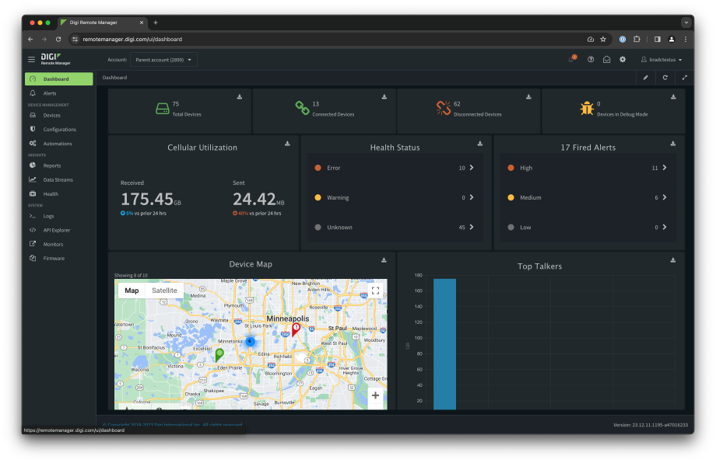
通过嵌套子账户进一步组织对设备的访问
许多Digi Remote Manager 用户处理的设备要么属于他们管理的终端客户,要么与其他公司共享,用于第三方支持或审计等任务。Digi Remote Manager 现在支持多级子账户,为希望根据单个客户或用户群隔离设备的服务提供商和大型企业提供更大的灵活性。
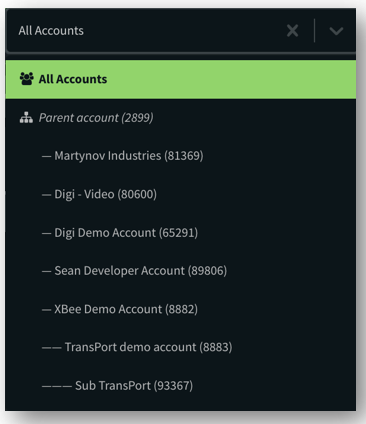
快速扫描和修复一台或多台设备,以确保配置合规性
Digi Remote Manager 配置文件用于维护和管理 Digi 设备上的正确固件版本、配置设置、Digi Containers 和文件系统设置。以往,配置文件会扫描与配置文件链接的组内的所有设备。现在,用户可以选择在自动计划之外扫描哪些设备,这要归功于 扫描配置文件项目添加到 操作下拉菜单中添加了扫描配置项目。 设备页面上的 "操作 "下拉菜单中添加了扫描配置项目。 用户可以利用它对一台或多台选定设备执行临时配置扫描和修复,这对用户在账户中暂存特定站点或排除特定站点故障时大有裨益。
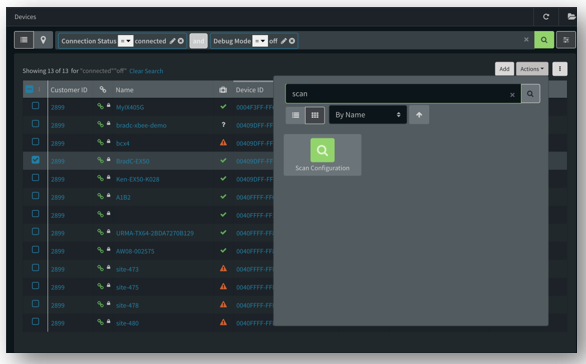
复原力

利用 OSPF 路由扩展 DMVPN 的使用范围
动态路由有助于保持网络数据包处理的最新状态,确保数据到达需要到达的地方。动态多点虚拟专用网(DMVPN)是虚拟专用网(VPN)的一种动态隧道形式。它使用多辐条到集线器网络,其中辐条路由器的网络地址不需要知道,因此也不需要在集线器路由器中配置。
自23.3 固件版本发布以来,Digi 路由器一直支持 DMVPN 第 3 阶段辐条隧道以及 NHRP 和 mGRE 路由协议。现在,Digi 已将 DMVPN 支持扩展到通过 DMVPN 隧道的 OSPF 路由,它利用链路状态路由在 DMVPN 辐合器之间共享路由,并为共享网络中的每个可能目的地确定最佳逻辑路径。
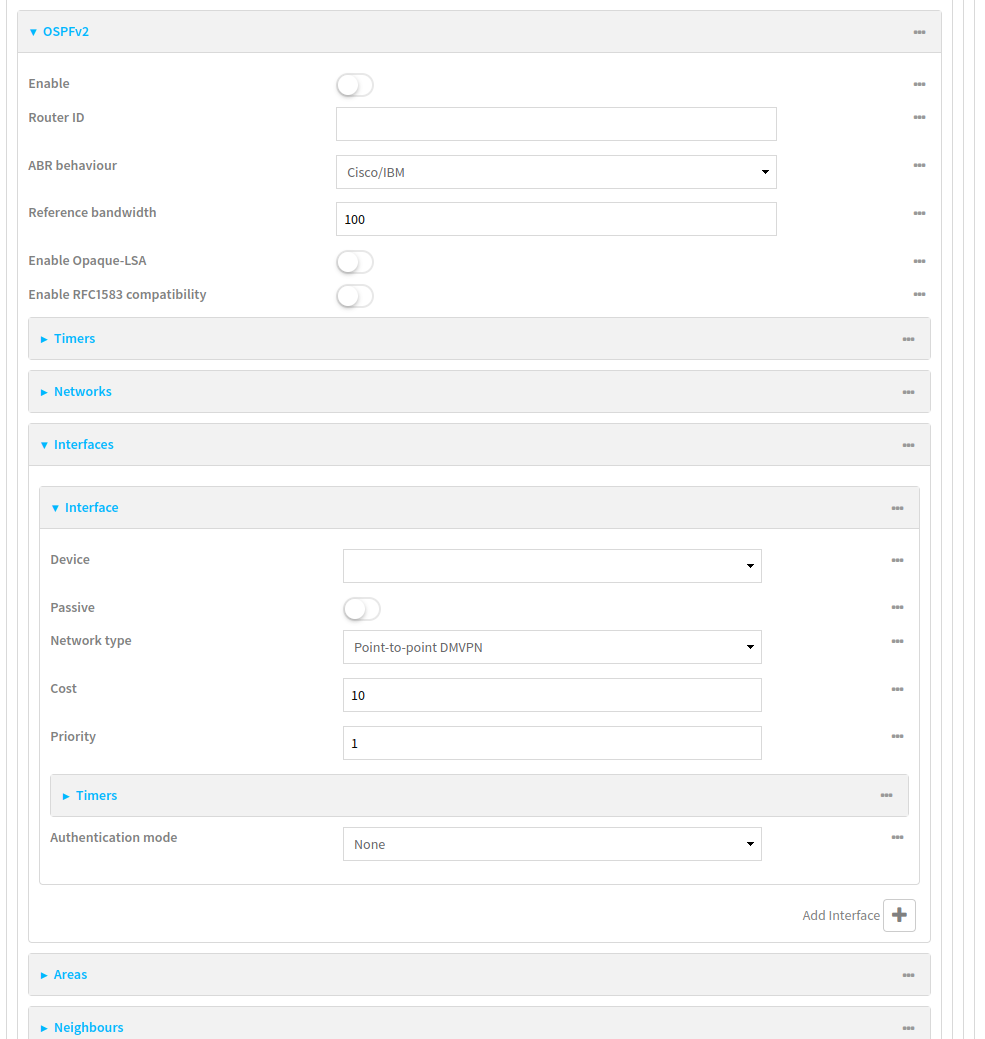
更多详情,请参阅 Digi 设备用户指南的DMVPN 部分 。
快速生成树协议
Digi 设备除支持标准 STP 外,现在还支持 RSTP,从而扩展了网络桥接功能。RSTP 允许用户为其网络上的每台路由器、交换机或网桥自定义桥接优先级,从而为网络的整体正常运行时间提供了极其宝贵的优势和改进。RSTP 还能更快地响应拓扑变化(2-6 秒,而 STP 为 30-50 秒)。请注意,要在 Digi 设备上使用 RSTP,网络上的所有其他路由器/交换机/网桥也必须支持 RSTP;否则,它将退回到使用 STP。 有关在 Digi 设备上设置 STP/RSTP 选项的更多详情,请参阅用户指南中的 "配置网桥"。
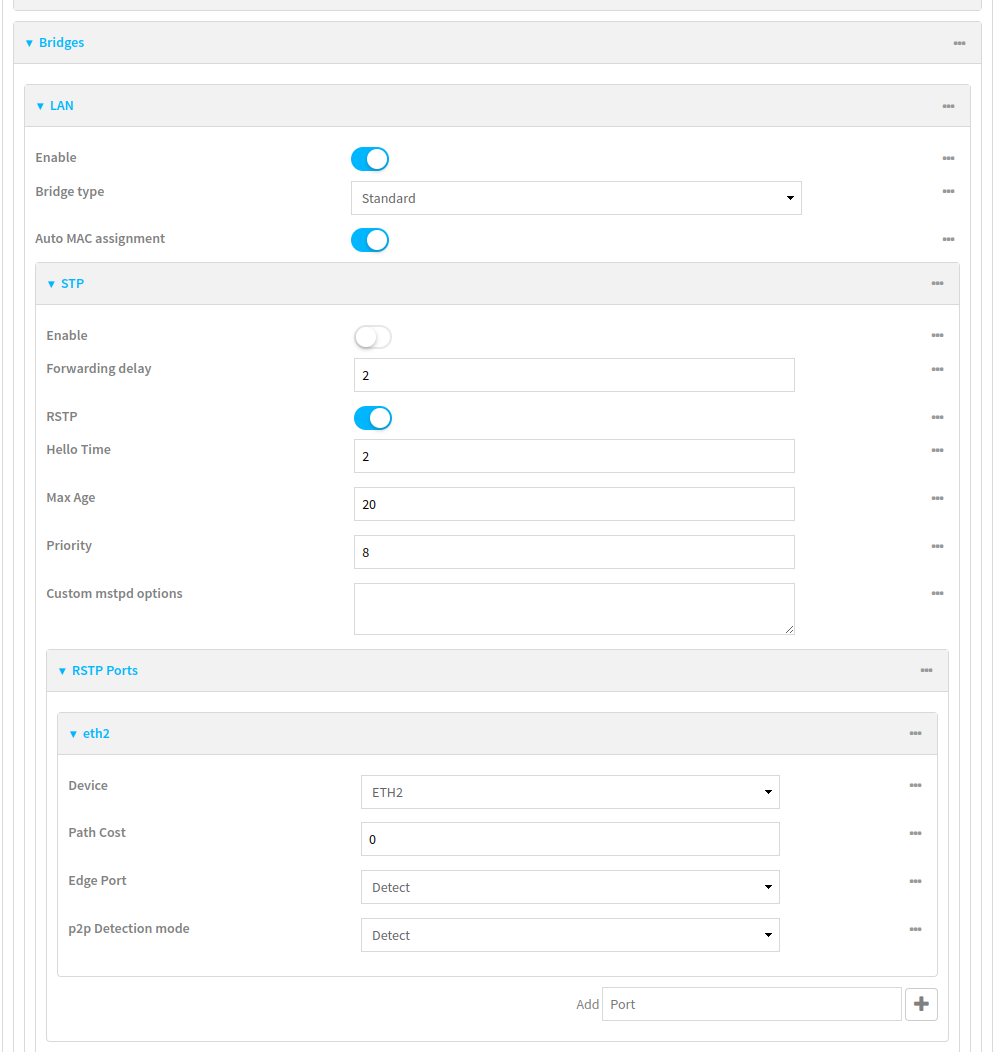
使用设备启动的 Realport 连接,始终保持对串行控制台的带外远程访问。
Digi RealPort 允许用户轻松将连接到 Digi 设备串行端口的设备联网,使用户能够远程连接这些串行设备,就像连接 PC 上的本地 COM/TTY 端口一样。
新的 设备启动模式让 Digi 设备自动建立与用户 PC 的 RealPort 连接,从而无需 Digi 设备拥有 PC 可以直接访问的 IP 地址。 现在,用户可以拥有一个始终可用的 COM 端口,连接到 RealPort Digi 设备后面的远程串行设备。

投资回报率

将 Digi TX54 系列点火感应器用作数字输入,监控其他车载设备
Digi TX54路由器电源输入端口上的点火输入为设备在车辆熄火后正确关闭或延迟关闭提供了一种方法。对于 TX54 必须在车辆停放并停止使用一天后上传关键任务数据的情况,该选项尤为重要。
现在,用户可以扩大 TX54 路由器点火感应线的使用范围,使其也可以作为数字输入,用于监测和报告车辆中继电器、物理开关或按钮的变化。此外,TX54 前面的电源按钮现在也可以用作手动触发的数字输入,供需要跟踪设备维修次数的技术人员或安装团队使用。
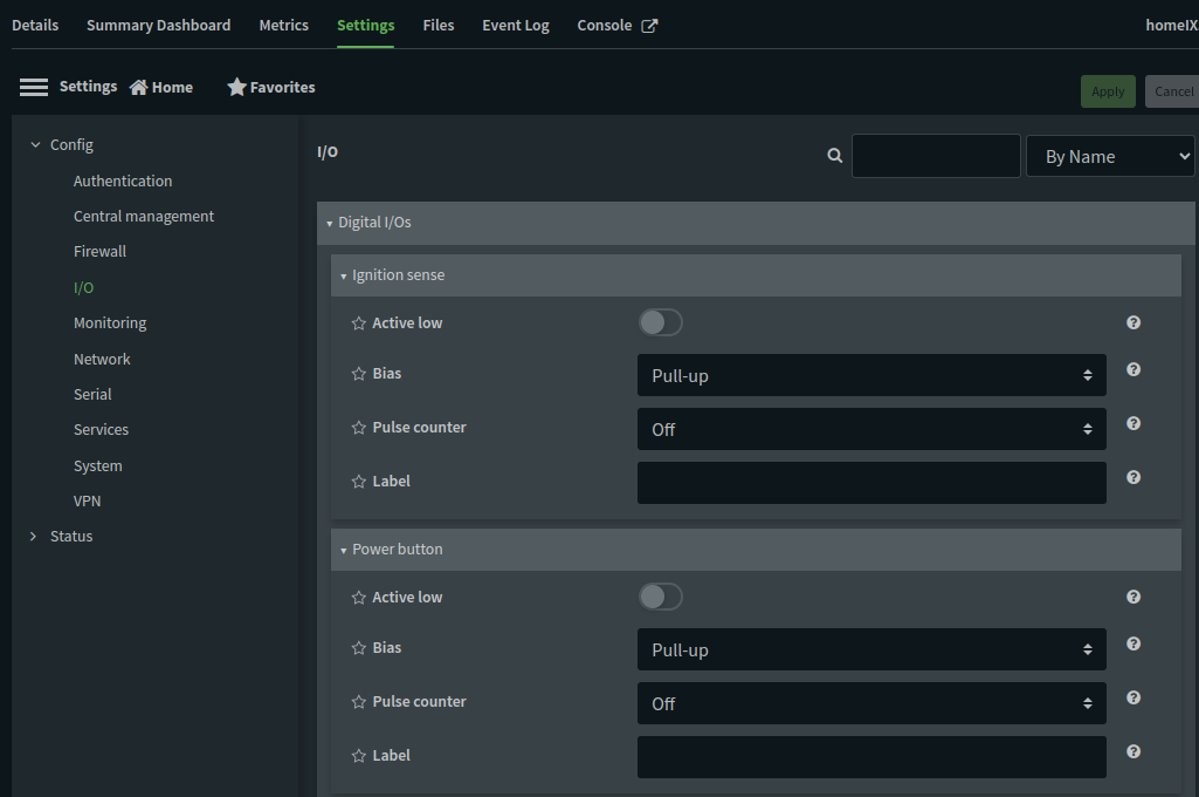
使用绑定代理提高广域网绑定性能
Digi WAN Bonding 集成了Bondix S.A.NE软件,以优化和扩展Digi连接解决方案的功能。S.A.NE软件现在包括一个Bondix代理,以进一步优化标准TCP流量,如网页浏览和速度测试,为用户的Digi设备提供更快的观察吞吐量。
该广域网绑定代理可与 Digi 设备配置中已有的所有其他广域网绑定设置一起启用和配置,包括通过Digi Remote Manager 一并管理和更新这些设置。请参阅 使用Digi Remote Manager 在多台设备上启用和配置广域网绑定 部分了解更多详情。
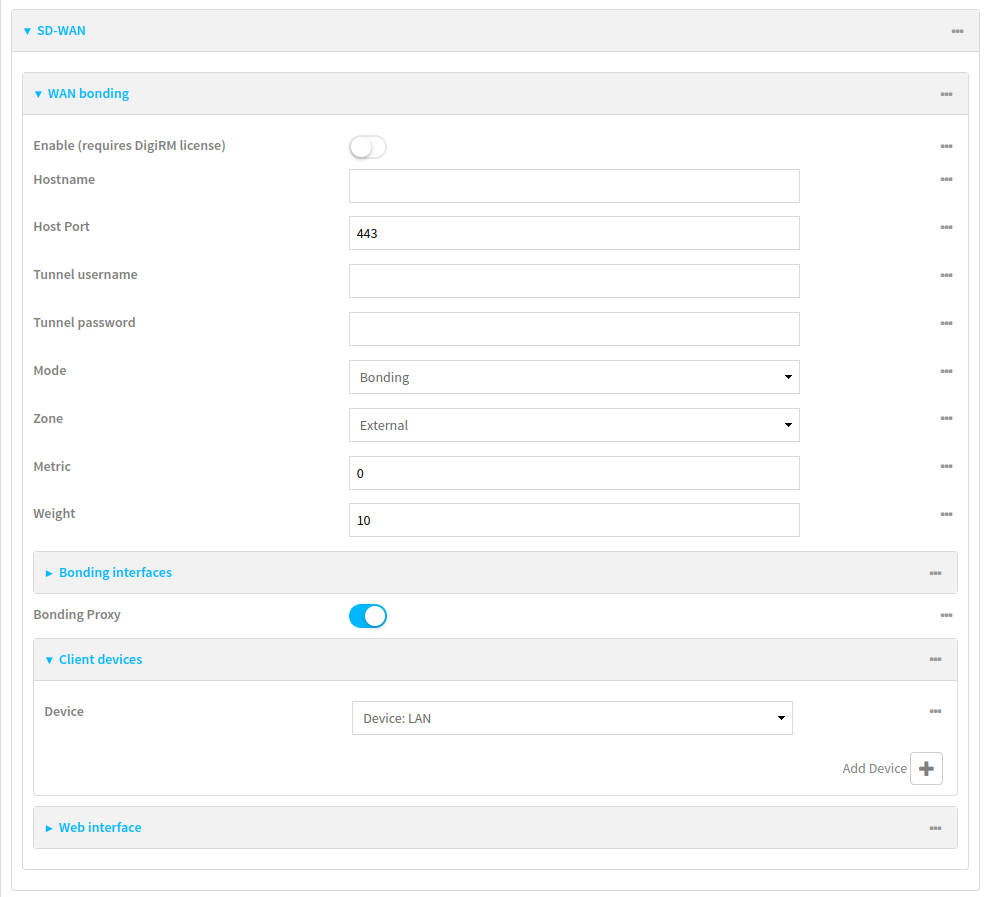
将传统的 BOOTP 设备连接到 Digi 路由器,使其保持活力
在 DHCP 成为设备获取动态分配 IP 地址的主流协议之前,BOOTP 是工业网络设备上使用的一种较早的协议。Digi 设备现在支持通过 DHCP 和 BOOTP 协议向客户端设备提供动态 IP 的功能。有关在 Digi 设备上设置局域网 DHCP 网络的详情,请参阅用户指南中的 "配置局域网 (LAN)"。
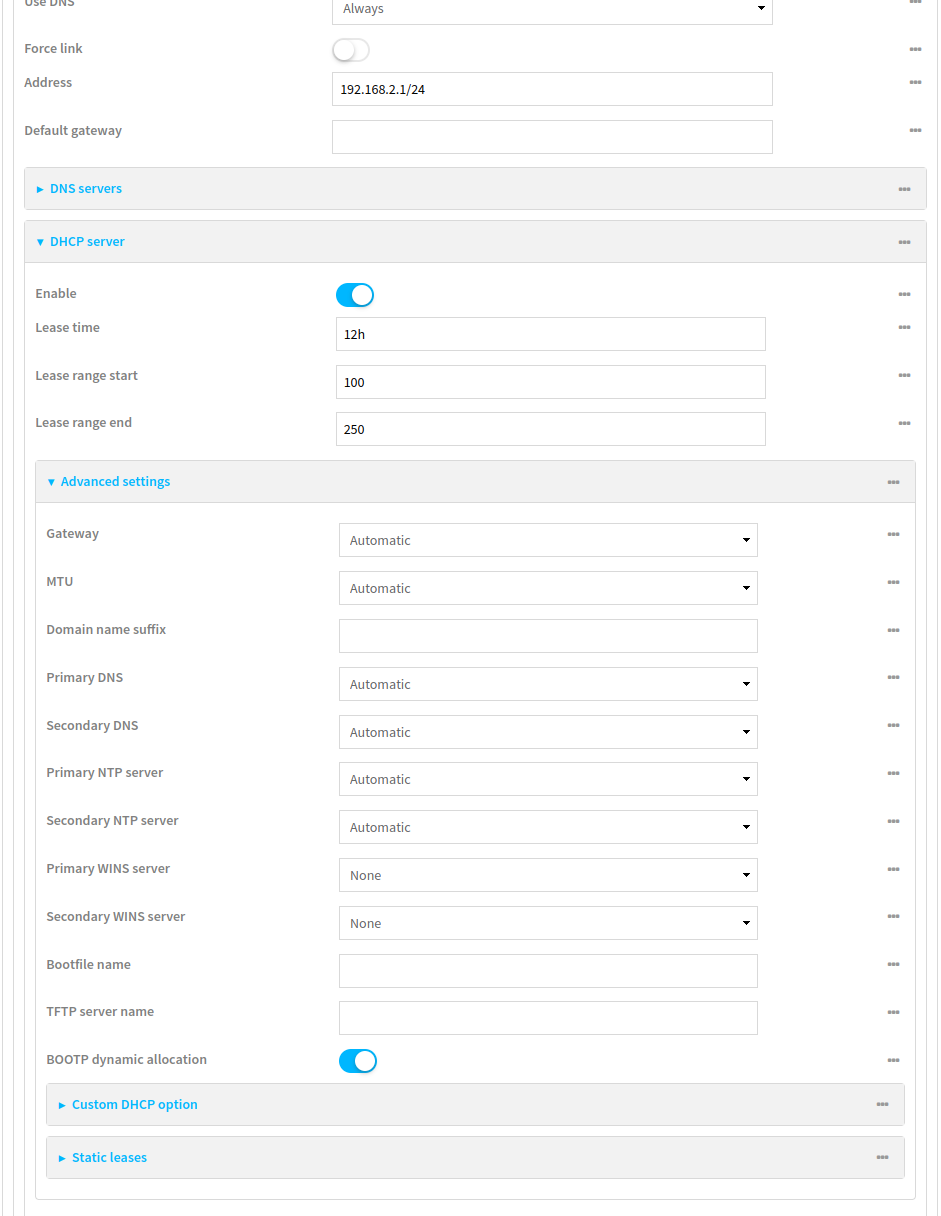
完整更新日志
有关新 DAL OS 固件中包含的上述功能的详细信息,以及其他增强功能、错误修复和安全更新的详细信息,请参阅相关产品系列的更新日志链接:
如果您对以下功能有任何疑问或担心,或需要更新设备的帮助,请联系 Digi 支持团队。
下一步工作